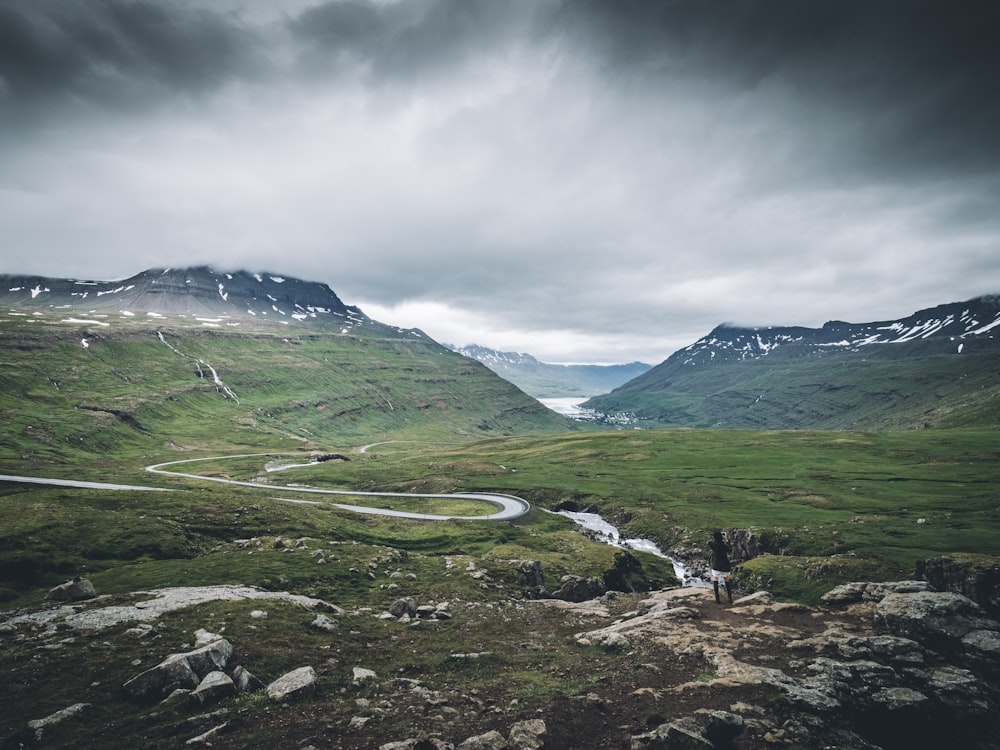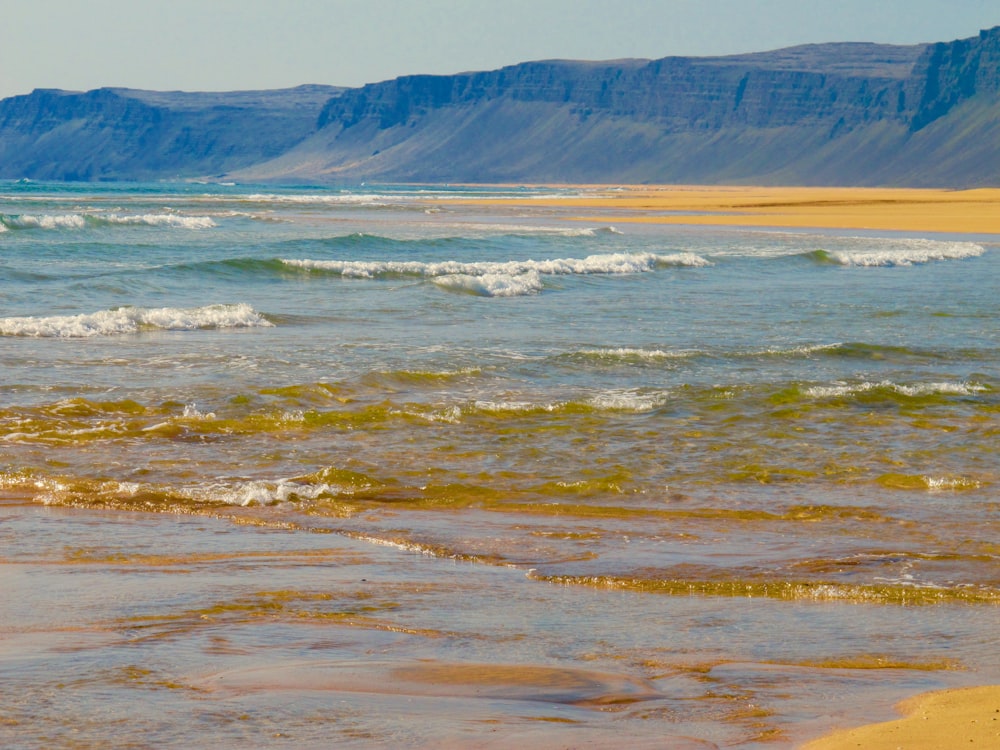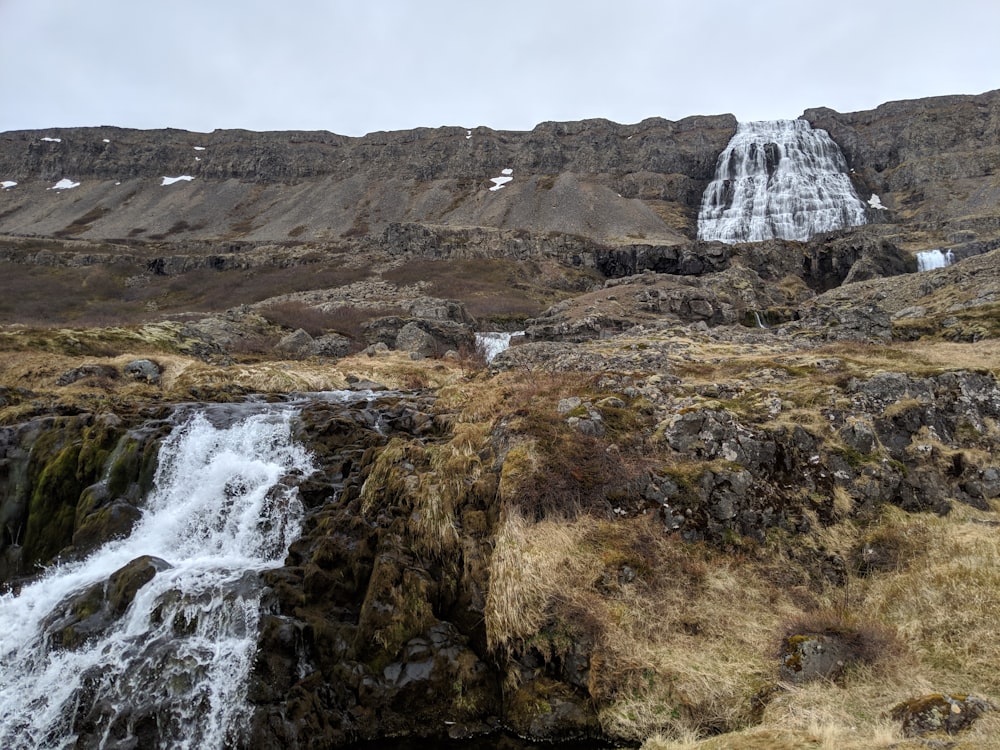How to Visit the Best Iceland Fjords: Our Ultimate Guide

Iceland is the land of mythical enchantment and home to dramatic landscapes of exploding geysers, hot springs, and plopping mud-pits. On your next visit, head to the Iceland fjords to lose sight of people and immerse yourself in nature’s beautiful gifts.
What is a fjord?
Fjords are deep and narrow waterways that reach all the way inland. Most of Iceland’s fjord formed during the last ice age, as glaciers moved towards the sea and carved out the landscape into these water inlets. Towering rock walls surround these fjords and form an isolated paradise away from the world. Only the roaring sound of waterfalls and the occasional cawing of resident seabirds disrupt their tranquility.
The coastal fjords are as beautiful as they are barren. The black landscape houses tiny oceanside fishing hamlets, geothermal hot springs, community-owned swimming pools, hot tubs, and UNESCO World Heritage Sites. Bumpy roads meander the impressive coastline, which stretches over 1000 kilometers.
A mere 10 percent of visitors traverse the coastline of Iceland, which leaves many beautiful fjords unexplored. There are 109 fjords in the country, most of which are on the East and West coasts along with a handful in the North. Our Icelandic Adventure trip will take you through Iceland’s best fjords in the course of seven days!
The Eastfjords
Despite its connection to major roads, the Eastfjords region gives a sense of remoteness for your next getaway. If you are looking for the best Icelandic fjords for your next excursion, Borgarfjörður, Seyðisfjörður, and Mjóifjörður are the top three options. Each boasts extraordinary hiking trails, beautiful craggy headlands, and hundreds of seabird species that are worth packing a pair of binoculars for.
Seyðisfjörður Fjord
Seyðisfjörður huddles between the Bjólfur and Strandartindur mountains, both of which stand over 1000 meters above sea level. This small town is famed for its collection of well-preserved timber houses that reflect beautifully in the still water of the fjord. There is also easy access to rocky beaches, a busy puffin colony, and ruins of ancient fishing villages along the shoreline.
The 700-strong residents of Seyðisfjörður have formed one big creative family. There is a flourishing art and music scene in town and delicious local eateries.
Lonely Planet celebrates this little village as one of their favorite picks in the entire country. Don’t forget to check out its famous Rainbow Street, which was painted in 2014 to celebrate the LGBTQ community.
Borgarfjörður Fjord
This small fjord is the ideal place to learn about traditional Icelandic small-boat fishing. Its 100-strong community offers top-tier hospitality and deliciously fresh fjord-to-table cuisine. Within its superb hiking trails, you’ll find safe decks to view a vast colony of over 10,000 pairs of puffins that nest there every summer.
The fjord takes its name from the Icelandic Elf Queen Borghildur. Next to the village is a rocky outcrop, an exciting place to visit if you believe in elves. They welcome visitors as long as their rock homes are respected!
Mjóifjörður Fjord
Mjóifjörður is steeped in mystery and history, tales of witches, and whaling. The fjord is home to a close-knit family of eleven. The community is beautifully remote and has an eery feeling that makes you feel like you’ve stepped back in time.
The Westfjords
This is one of the most spectacular and breathtaking regions of the country. Villages lay sparsely across dramatic and untouched landscapes. Its lack of tourists allows you to lead your very own explorations, so remember to pack a camera to capture the region’s beauty.
You may have seen the famous Icelandic black sand, but in the West, Rauðasandur has an impressive pink coastline formed from scallop shell fragments. When you walk along the fjords’ shores at low tide, look out for mischievous seals. It’s worth noting that the Westfjords are only accessible during the summer months, as snowfall can be quite heavy during the winter. The followings are must-see destinations on your trip to the Westfjords.
Samúel Jónsson’s Art Farm
The Samúel Jónsson’s Art Farm is a surreal collection of art created by the farmer Samúel Jónsson, who lived in the Westfjords all of his life. His sculptures depict farm animals, wildlife, and sea creatures that are native to the region. The farm is a must-visit destination to immerse in the local life and art scene of the Westfjords.
After Jónsson passed away in 1969, residents and government organizations have worked together to preserve the site. Nowadays, visitors can still come to see the fjords through the farmer’s eyes.
Dynjandi Waterfall
Dynjandi plunges over the rocky escarpment overlooking Dynjandivogur bay. Basic camping gear is available for hikers and cyclists in the protected national reserve. We recommend an overnight camping trip to take in the views of the expansive fjord and the impressive mountainside.
Hornstrandir Fjord
Hornstrandir natural reserve is one of the few remaining outbacks of wilderness left in Europe. Much of this is due to its challenging terrain and volatile weather conditions. The mountain passes and rivers become impassable with changes in the tide, and vertical-faced snowdrifts can get you stuck. To ensure your safety, seek professional advice from the locals before you explore the wilderness.
A smattering of fishermen once lived in Hornstrandir, but since the mid-1970s local authorities have fenced off the area as a natural reserve. The government imposes strict preservation rules due to its rich and fertile vegetation.
Rated as the best fjord in Iceland, Hornstrandir boasts 580 square kilometers of sparkling fjords, imposing glaciers, barren tundra, and pretty alpine uplands. Visitors are obliged to follow marked pathways, stay in designated campgrounds, and remove their own trash. The best time to explore Hornstrandir is in July.





